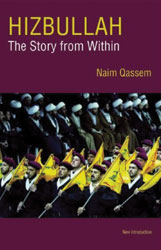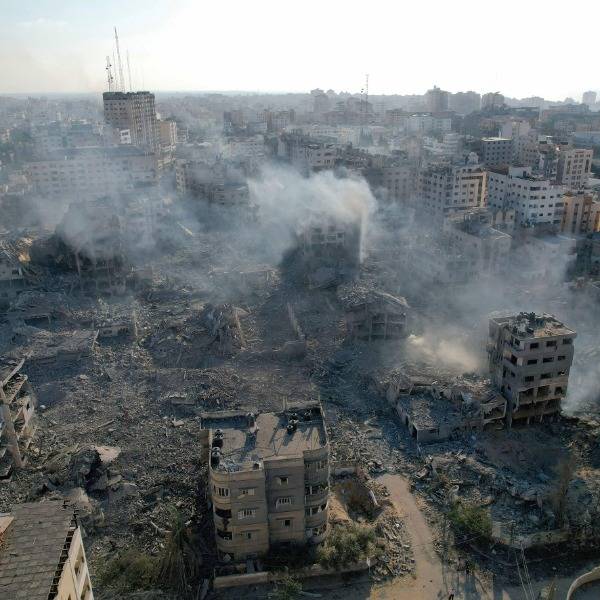The two most controversial political parties in the Middle East, Lebanon’s Hizbullah and the Palestinian Hamas, are rarely out of the headlines, but reportage and polemic about them has too rarely been matched by really detailed or probing analysis. These two books, in radically different ways, thus fill major gaps and offer crucially valuable insights.
Although Hizbullah is a Shi’ite movement, Hamas a Sunni one, and despite other critical contrasts, – Lebanon has been an independent state for decades while Gaza has never had self-government – their similarities are striking. These go far beyond the most notorious affinity: a shared penchant for suicide bombing. Both are products of bitter strife against both external and internal enemies. Both are children of the 1980s: Hamas was created in 1987, while Hizbullah was formed in 1982, in response to Israeli invasion and also as a new intervention in Lebanon’s complex and bloody internal politics.
Their social bases are similar, as are the backgrounds of their leaders. Surprisingly to some, almost none of Hamas’s chiefs, and very few of Hizbullah’s, had formal religious education, let alone are qualified to count as authorities within the Islamic canon. They are, of course, allies – albeit in a loose and sometimes uneasy way – and both rely heavily on Iranian aid. Are they then essentially nationalists who use a religious idiom, or first and foremost Islamists? According to scholar of jihad Fawaz Gerges’s well-known distinction between religious nationalists and global jihadists, both movements would clearly fall into the first camp.
 If the two movements are so closely parallel, the two books are strikingly different. Qassem’s is, as advertised, an insider’s account of Hizbullah: he is the Deputy Secretary General of the movement. He gives mainly a narrative history, tracing both Hizbullah’s military campaigns and its involvement first in social mobilisation, then in Lebanon’s constitutional politics. He also offers detailed accounts of Hizbullah’s “vision and goals”, its ideological sources of inspiration and the theological basis of its self-legitimisation. There is a profound, unresolved and perhaps unresolvable tension here, for Qassem mingles arguments which would appeal to anyone sympathetic to social justice within Lebanon or to the Palestinian cause – indeed ones cast in the idiom of democratic politics – with claims which are likely to be unattractive or downright incomprehensible to anyone not already steeped in an Islamist and specifically Shi’ite worldview.
If the two movements are so closely parallel, the two books are strikingly different. Qassem’s is, as advertised, an insider’s account of Hizbullah: he is the Deputy Secretary General of the movement. He gives mainly a narrative history, tracing both Hizbullah’s military campaigns and its involvement first in social mobilisation, then in Lebanon’s constitutional politics. He also offers detailed accounts of Hizbullah’s “vision and goals”, its ideological sources of inspiration and the theological basis of its self-legitimisation. There is a profound, unresolved and perhaps unresolvable tension here, for Qassem mingles arguments which would appeal to anyone sympathetic to social justice within Lebanon or to the Palestinian cause – indeed ones cast in the idiom of democratic politics – with claims which are likely to be unattractive or downright incomprehensible to anyone not already steeped in an Islamist and specifically Shi’ite worldview.
Thus Qassem’s writing is rather little help to those who find, as I do, that the most fundamental issue here is one of cultural or intellectual translation: how can “we” (people who, whether we’re Westerners or Arabs and whatever our own religious background or lack thereof, think of politics and political ideas as essentially secular pursuits) comprehend a political vision framed in such to-us-alien terms? The impersonal style of Qassem’s narration, its air of bland certitude and repetition of multiple pre-given verbal formulae, also do not help here. A frustrating book, then: but the always admirable British-Lebanese independent (and secular) publishers Saqi have performed an important service in making it available.
The role of Iran naturally features heavily – indeed Qassem will no doubt inadvertently give ammunition to those who see Hizbullah as simply a puppet of Tehran: the words of Khomeini, who is throughout reverently referred to as "The Jurist-Theologian," are treated almost literally as Holy Writ. To many readers, the book’s most revealing and perhaps disturbing passages will be those early on, where Qassem outlines Hizbullah’s doctrines of jihad and of martyrdom.
 Milton-Edwards and Farrell by contrast are “outsiders”, Western academic writers who evince no overt partisanship, and are certainly not blind to the authoritarian and repressive elements in Hamas’s ideology and practice. Hamas is based on wide reading, multiple interviews and much on-the-ground experience. Dealing in a somewhat breathless update with Israel’s devastating 2009-10 assault on Gaza and its aftermath, they (no doubt wisely) somewhat hedge their bets on the vexed question of how far Hamas itself should be blamed – not least for so wilfully provoking Israel’s vicious but entirely predictable response to Islamist attacks. Is Hamas the protector of Gaza’s long-suffering people, or more like their jailer and the author of their misfortunes? Similarly, detailing the tensions and recurrent flare-ups of internecine Palestinian violence between Hamas and Fatah, they apportion blame cautiously and pretty evenly – for which they will get no thanks from any party involved.
Milton-Edwards and Farrell by contrast are “outsiders”, Western academic writers who evince no overt partisanship, and are certainly not blind to the authoritarian and repressive elements in Hamas’s ideology and practice. Hamas is based on wide reading, multiple interviews and much on-the-ground experience. Dealing in a somewhat breathless update with Israel’s devastating 2009-10 assault on Gaza and its aftermath, they (no doubt wisely) somewhat hedge their bets on the vexed question of how far Hamas itself should be blamed – not least for so wilfully provoking Israel’s vicious but entirely predictable response to Islamist attacks. Is Hamas the protector of Gaza’s long-suffering people, or more like their jailer and the author of their misfortunes? Similarly, detailing the tensions and recurrent flare-ups of internecine Palestinian violence between Hamas and Fatah, they apportion blame cautiously and pretty evenly – for which they will get no thanks from any party involved.
But the core message of their book is that Hamas and the wider social forces which gave it birth will not go away – certainly not so long as Israeli occupation and settlement continue, and probably not even if those could finally be brought to an end. They must be engaged with, talked to, by all the relevant international actors and above all, of course, by Israel’s government itself. Their last words are a quotation from a Hamas leader, rather than their own, but they leave little doubt that they agree with him: “This is a message for the politicians. There is no solution if it doesn’t include Hamas.”

